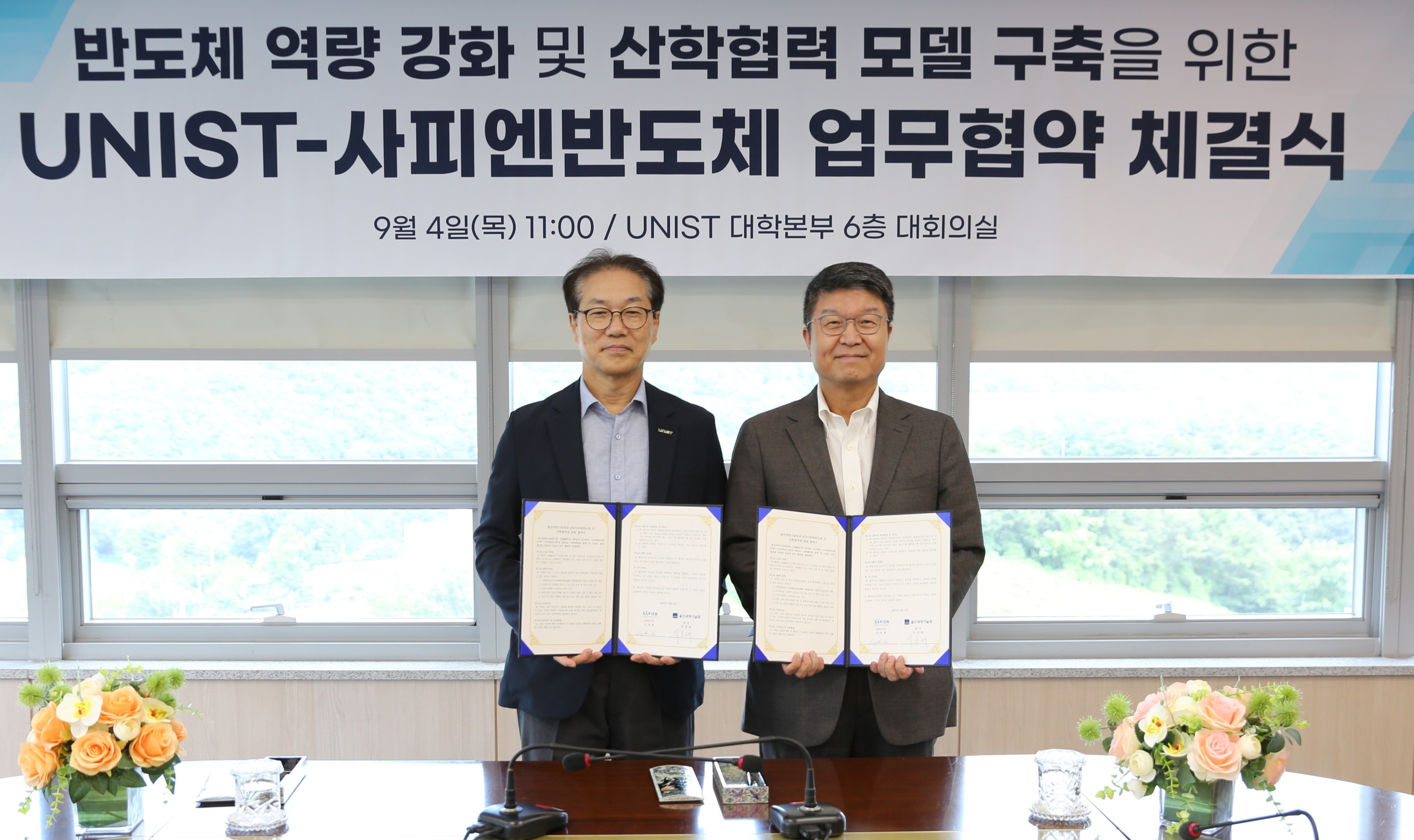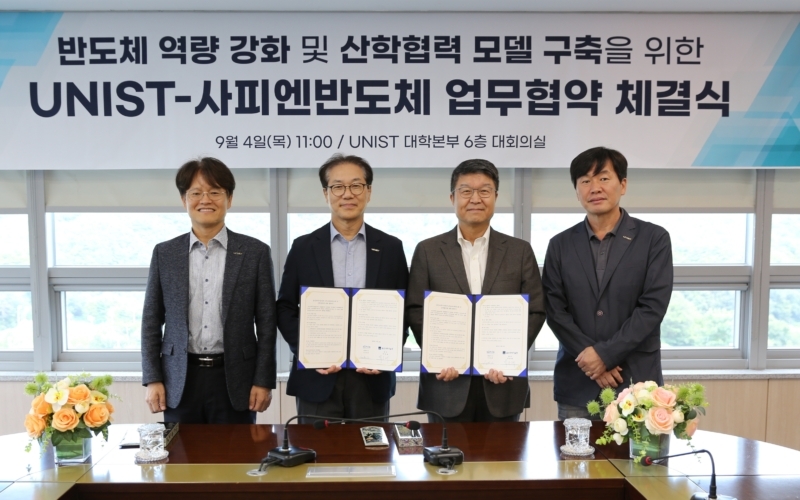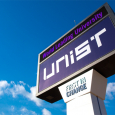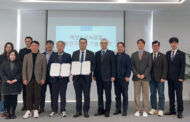UNIST and Sapien Semiconductors Inc. have announced a strategic partnership focused on pioneering research at the intersection of next-generation semiconductors and artificial intelligence (AI). This collaboration aims to catalyze a paradigm shift in future industries through innovative technological integration.
On September 4, the two organizations formalized their partnership by signing a memorandum of understanding (MoU) at UNIST. The partnership leverages UNIST’s robust research infrastructure and talented human resources alongside Sapien Semiconductors’ advanced expertise in semiconductor design and proprietary intellectual property (IP), fostering joint research and technology exchange.
The core of this collaboration lies in technological strength. UNIST will contribute its cutting-edge research environment and talent pool, while Sapien Semiconductors will bring its advanced chip design capabilities and a strong portfolio of IP. The synergy created by combining these assets is expected to generate tangible innovations in promising fields such as AI-enabled devices and next-generation display technologies.
Sapien Semiconductors specializes in high-performance display driver chips, engines for AR and MR (Mixed Reality) devices, and Micro-LED driving technology. When integrated with UNIST’s experimental research, these strengths are poised to lead to groundbreaking technological developments.

President Chong Rae Park and Dr. Myunghee Lee posed for a commemorative photo after signing the agreement, symbolizing their commitment to this forward-looking partnership.
The MoU signing was attended by UNIST President Chong Rae Park, Director Youngsik Kim of the Office of Industry-University Cooperation, Director Jae Joon Kim of the Office of Information Affairs, and Dr. Myunghee Lee, CEO of Sapien Semiconductors Inc. Following the ceremony, participants discussed specific collaboration plans over lunch. Later that day, the partnership’s strategic significance was further highlighted during the ‘4th Industry-Academic Convergence Forum,’ which expanded upon their joint vision.
During the second session of the forum, Dr. Myunghee Lee delivered a lecture titled “Next-Generation Display Semiconductor Design and Innovation in AR/MR Technologies,” sharing insights into his company’s proprietary multi-bit MIP architecture, PWM-based MPD technology, and successful collaborations with TSMC, a leading global foundry. The event served as a platform for strategic discussions on future technological directions.
President Park emphasized, “This collaboration exemplifies a new model of industry-academic synergy that promotes mutual growth and innovation. We are dedicated to supporting the global competitiveness of AI convergence technologies.”
Dr. Lee added, “By maximizing our synergy with UNIST, we aim to enhance our design capabilities and expand our market reach, taking a leading role in the global display and AR/MR industries.”
Through this partnership, UNIST seeks to strengthen its interdisciplinary research ecosystem, bridging semiconductors, materials, and AI. The strategic alliance with Sapien Semiconductors will facilitate the development of innovative technologies with broad industrial applications, fostering regional and national technological leadership.
Founded in 2017 by Dr. Myunghee Lee as an Industry-University Collaboration Professor at UNIST, Sapien Semiconductors originated as a faculty startup. The company has pioneered the commercialization of ultra-high-density Micro-LED display engines based on its proprietary circuit design patents, achieving the world’s first CMOS backplane custom semiconductors capable of 5,000 to 10,000 PPI micro-LED displays. In February of last year, the company was listed on the KOSDAQ, demonstrating its technological prowess and growth potential.
Founded in 2017 by Dr. Myunghee Lee during his time as Industry-University Collaboration Professor at UNIST, Sapien Semiconductors originated as a faculty startup. The company has pioneered the commercialization of ultra-high-density Micro-LED display engines based on its proprietary circuit design patents, achieving the world’s first CMOS backplane custom semiconductors capable of 5,000 to 10,000 PPI micro-LED displays. In February of last year, the company was listed on the KOSDAQ, demonstrating its technological prowess and growth potential.














